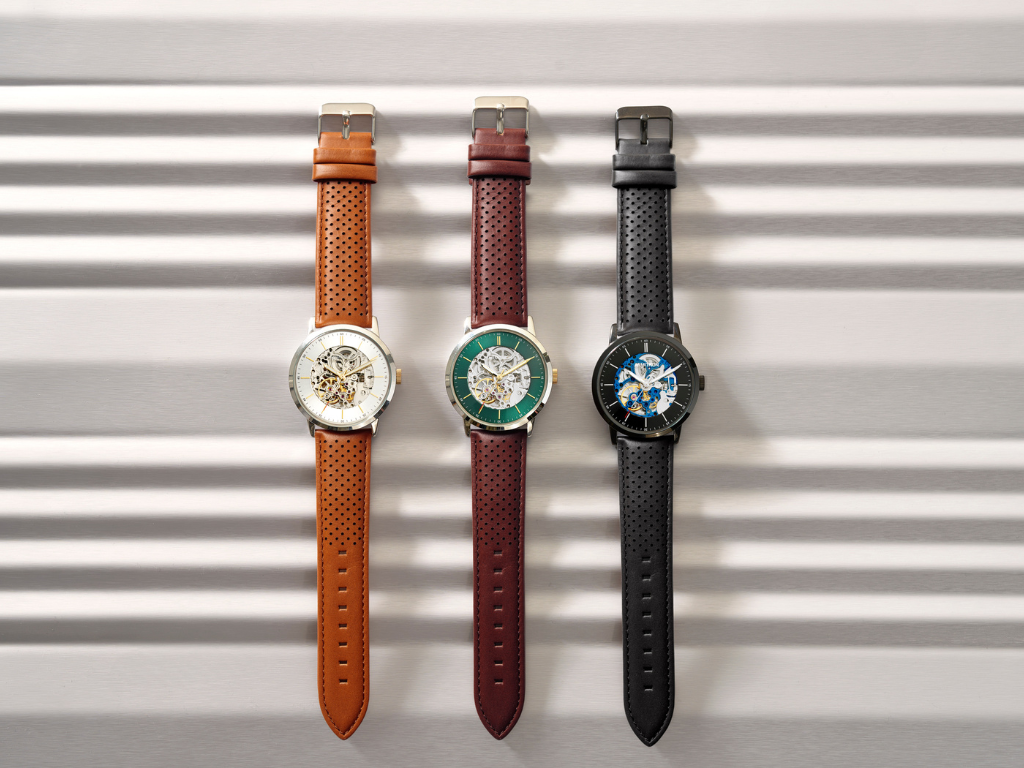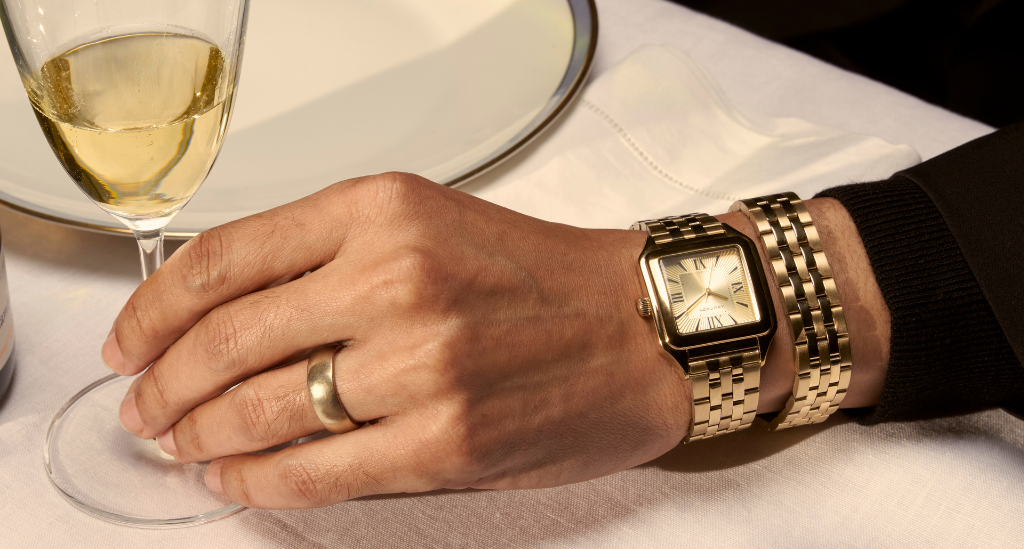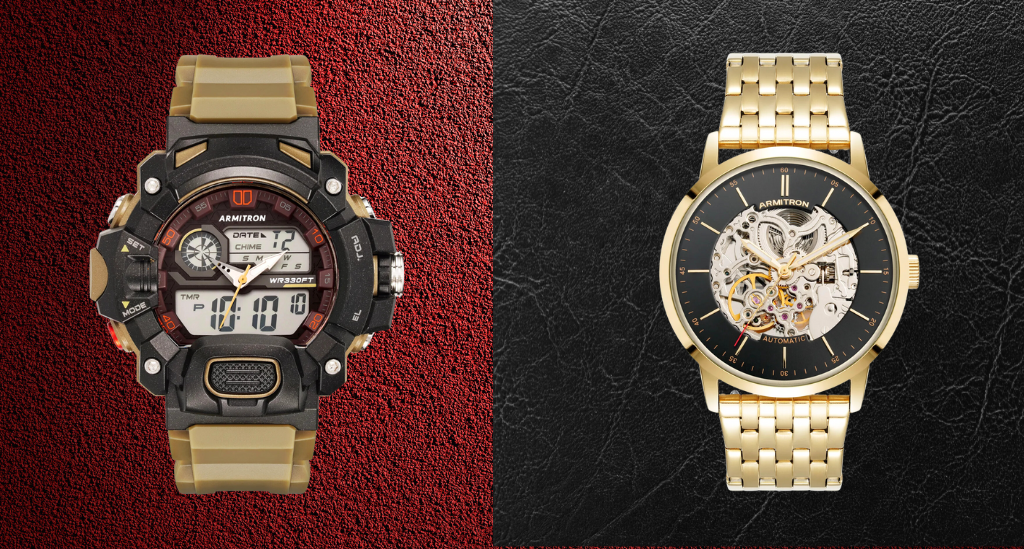How Does A Watch Work? A Guide to Watch Mechanics
Have you ever wondered what makes your watch tick? Whether you're a proud owner of a sleek men’s watch or a trendy women’s watch, understanding the inner workings of your timepiece can deepen your appreciation for how it was made.
But aside from satisfying your curiosity, knowing how your watch works can also help you keep your timepieces accurately ticking and understand how to maintain them better.
In this guide, we'll give you a glimpse into the fascinating world of watch mechanics and explore how different types of watches work so you can feel more confident and connected with your timepiece!
The Basics of Watch Mechanics
Understanding Mechanical Movements
Mechanical watches are marvelous masterpieces of engineering, relying on delicate mechanisms to keep accurate time. Inside these watches, you'll find a series of gears, springs, and levers working in unity. The main parts of a mechanical watch include the mainspring, gear train, escapement, and balance wheel. Here's a closer look at how each part works:
- Mainspring - Like a tightly coiled metal ribbon, the mainspring is the powerhouse of the watch that stores energy when you wind it.
- Gear Train - Transfers the energy from the mainspring to the escapement.
- Escapement - Consists of a wheel and a pallet fork, the escapement is like a small gear with pointed teeth that regulates the release of energy in limited portions.
- Balance Wheel - Similar to a miniature bicycle wheel, this part swings back and forth, controlling the speed at which the gears turn and helps regulate accurate timekeeping.
The accurate interaction between these parts makes mechanical watches incredibly reliable and a favorite among watch enthusiasts. If you want to know more about the specifics of a mechanical watch movement, consider how the balance wheel works in tandem with the escapement to maintain precise time.
Automatic Watches
How They Work
Automatic watches, also known as self-winding watches, are a type of mechanical watch that winds itself using the motion of your wrist. Amazing, isn't it? But how does this happen? If you look closely inside an automatic watch, you'll find a swaying weight, or rotor, that swings with your wrist's movement. This motion winds the mainspring, eliminating the need for manual winding.
Automatic watches are perfect for those who wear their watch daily and appreciate the combination of traditional watchmaking with modern comfort. The constant motion keeps the watch fully wound and ready to go, ensuring you never miss a second.
If you don't wear it regularly, an automatic watch will require a watch winder to keep it running. The automatic watch movement is a perfect alternative to manual winding, especially if you want a watch that blends convenience with tradition.
Manual Watches
How They Work
Manual watches, also known as hand-wound watches, need regular winding by the wearer so they can keep running. The process involves turning the crown to wind the mainspring, storing energy that powers the watch.
A manual mechanical watch offers a physical connection to the art of watchmaking, allowing you to engage with the mechanical timepiece and appreciate the craftsmanship involved in making one. This hands-on system can be particularly satisfying for those who enjoy the process of winding their watch each day. This way, a manual watch can be seen as a labor of love, requiring your touch to keep it alive.
Digital Watches
How They Work
Digital watches represent the modern evolution of timekeeping. They use electronic parts to display time digitally. These watches often include useful additional features like alarms, stopwatches, and even backlighting.
A digital watch uses a quartz movement or mechanism where a battery sends an electric current through a tiny quartz crystal, causing it to vibrate and keep accurate time. Then, the time is shown numerically on an LCD or LED screen.
A digital quartz watch is known for its accuracy and ease of use, making it a popular choice, especially for those living an active lifestyle. The simplicity of reading time at a glance and the added features make digital watches flexible companions for any activity. If you need to replace the battery in your digital watch, check out our guide on how to change a watch battery.
Analog Watches
How They Work
Analog watches, are usually known by their traditional dial and hands. Its use of rotating hands to indicate time provides a timeless and elegant way to track the hours, minutes, and seconds. These watches can be powered by either mechanical movements (manual or automatic) or quartz movements. Here's a closer look at how an analog watch works using different movements or mechanisms:
- Mechanical Movement - In analog watches with mechanical movements, the mainspring stores energy, which is transmitted through a series of gears (the gear train) to the escapement and balance wheel. The balance wheel swings, regulating the release of energy and moving the hands smoothly around the dial or watch face.
- Quartz Movement - In quartz-powered analog watches, a battery sends an electric current through a small quartz crystal, causing it to vibrate. A microchip measures these vibrations and converts them into regular pulses that move the watch's hands with accuracy. You can find this in analog-digital watches.
Like manual watches, analog watches are cherished for their aesthetic appeal and the craftsmanship involved in their creation. They offer a tangible connection to traditional watchmaking, making them a favorite among watch enthusiasts who appreciate both form and function.
The Role of Each Part in a Watch's Operation
Energy, Transmission, and Regulation
Remembering all those parts mentioned earlier may be confusing for some of you, but it can be easier to group them through their use. As you read earlier, each part of a watch plays an important role in its operation, working together to keep accurate timekeeping. Let's break down the key functions of the parts of a watch:
- Energy - The energy components store and provide the power needed to keep the watch running. In mechanical watches, the mainspring stores energy, which is released in controlled amounts. For quartz watches, a battery that looks like a small coin powers the watch. Then we have rotors for automatic watches and solar cells for solar watches that get energy from sunlight.
- Transmission - These parts transfer stored energy to various parts of the watch that indicate time. This includes the gear train, dial train, and motion work that ensures the hands move smoothly.
- Regulation - The escapement or escape wheel, balance wheel, balance spring, and quartz crystal regulate the release of energy, controlling the movement of the watch hands to keep time accurate.
Understanding how a watch works can enhance your appreciation for its design and functionality. Whether you're wearing luxury women’s watches or leaning into practical digital watches for men, knowing the mechanics behind these pieces can make every tick feel more significant.
Additionally, this knowledge can help you troubleshoot minor issues and perform basic maintenance either by yourself or with the help of a professional. This ensures that your watch remains in the best condition for years to come. And if you want to maintain your watch’s spotless look, read our tips on how to clean a watch.
Discover the Craftsmanship Behind Every Tick: Explore Armitron Watches
At Armitron, we pride ourselves on blending traditional watchmaking techniques with modern innovations and designs to create watches that are both stylish and dependable.
Explore our men's watches and women's watches to find a watch that not only tells time but also tells your story. Join the Armitron family and celebrate every second with a watch that's built to last.



